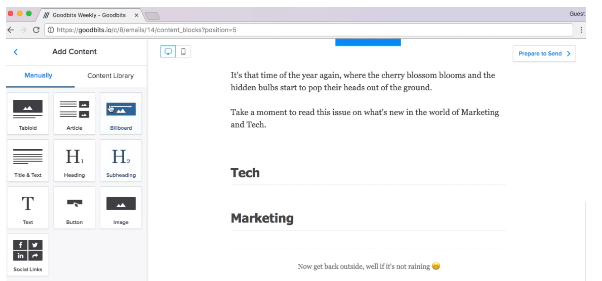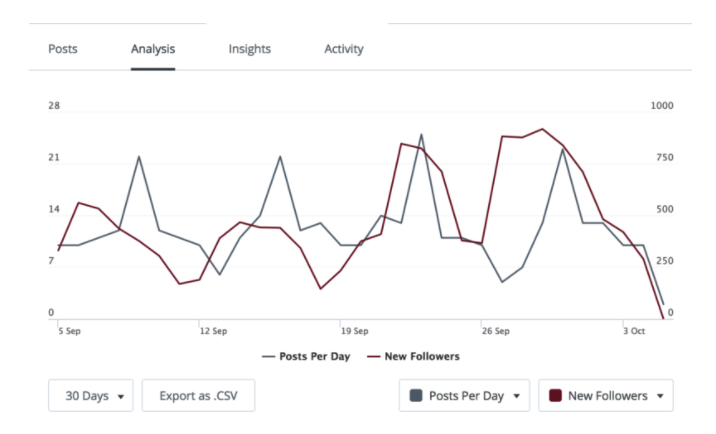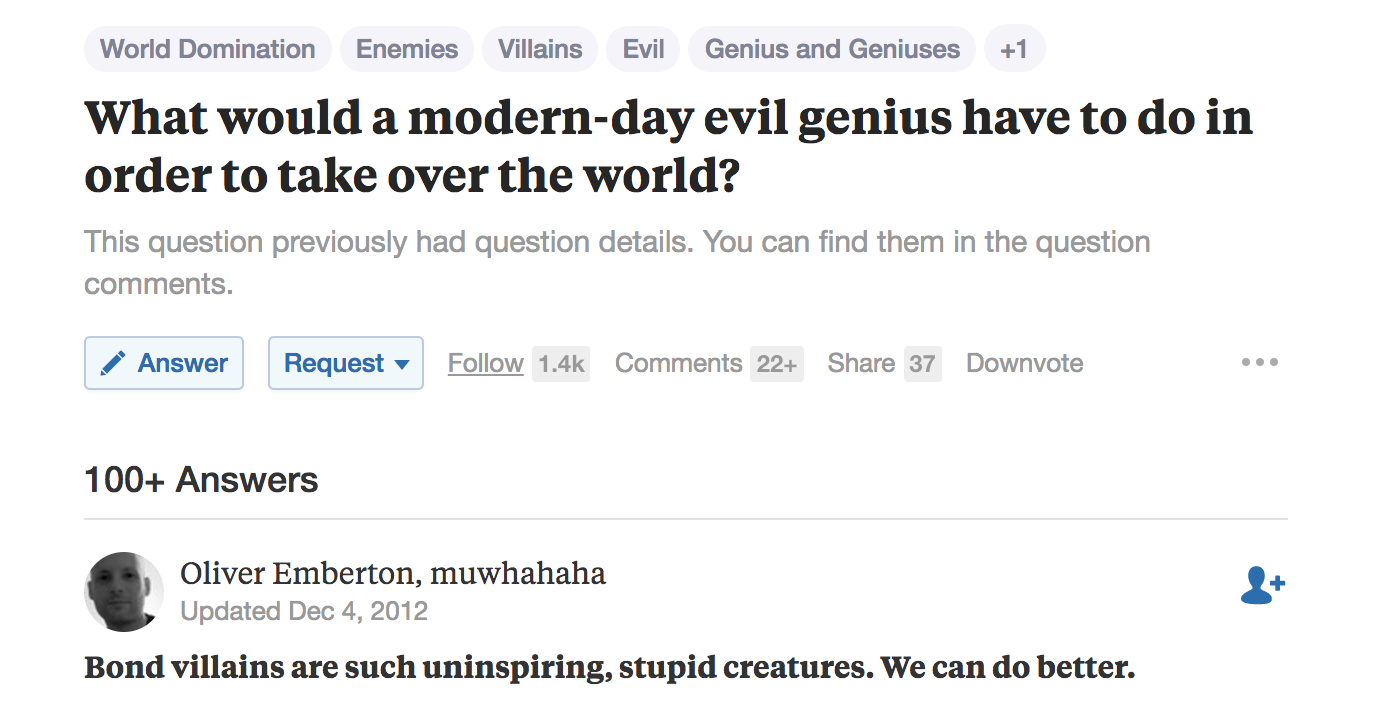Topics:
Content MarketingJoin 40,000+ sales and marketing pros who receive our weekly newsletter.
Get the most relevant, actionable digital sales and marketing insights you need to make smarter decisions faster... all in under five minutes.
As inbound marketers, we all know the benefits of creating valuable content for our website visitors.
Content has been the staple of an inbound strategy for years, but many marketers are missing one thing: the marketing.
When approaching content marketing, how long do you spend creating it? What about actually marketing it? 80% creation and 20% distribution and promotion? An even 50/50 split?
Well, according to Social Triggers, you should be spending only 20% of your time actually creating content, and 80% of the time promoting and distributing it.
Content without the marketing ISN’T content marketing, it’s just content. Without a huge social audience or subscriber list that is actively sharing and promoting your content for you, you won’t nearly reach the number of people you want.
Let’s throw a hypothetical in the mix. If you write a blog post and it gets under 1,000 views, chances are there are a LOT more people out there that would get value from your content.
Why, then, would you spend time creating more content when you already have something that hasn’t hit its full potential?
Instead of creating another piece (which, let’s be honest, probably takes a lot more effort), why not turn that 1,000 views into 10,000?
With a few robust content distribution channels and tools, you could be reaching a lot more of your potential customers with the content you already have.
The secret to reaching more viewers with your content has very little to do with how much you are creating, but rather how good you are at getting what you make in front of more people.
But easier said than done, right?
Well, we’ve put together this post of some great tools for distributing content and maximize your viewership. We also organized them by type of distribution channel so that you can identify the areas of your content marketing that need the most focus.
The 3 Different Types of Content Distribution Channels
Before showing you the tools, let’s dive into the three different types of distribution channels there are, and how you should strike a balance between the three.
First off are owned channels. Owned channels belong to you and are under your direct control. This includes your website, blog, email. These channels are probably the ones you use most for promoting your content.
Next, is earned media. Now, this is where the tricky stuff comes in. Others are involved, sharing your content or regulating HOW it’s shared. Social media, (where you or others post your work for the algorithm to then take over), guest blog articles, online communities, customer product reviews, and most media coverage are all forms of earned media.
By identifying which methods you are using and which ones you can afford to put a little more time towards, you can strike a perfect balance between these three distribution channels.
Without further ado, here are some great ways to get your content out there!
Tools for Owned Distribution Channels
GoodBits
Next up, GoodBits helps you incorporate your brand into every aspect of your email newsletters. There is an easy, drag-and-drop, WYSIWYG editor that you can use to collect content created by brand and display it seamlessly.

Allowing the addition of RSS, Twitter feeds, and more lets you create an email newsletter full of amazing links to your content for you to distribute. You can then integrate with MailChimp, Campaign Monitor, and HubSpot to customize mailing lists to send it to.
Sigstr
So you send regular promo emails or newsletters, who doesn’t? But what about the rest of the 10,000 (on average) emails sent annually? How can you market with normal, day-to-day communication? That’s where Sigstr comes in.
In its basic form, Sigstr gives your marketing team the power to improve their reach by integrating promotional content into the signature of your emails.
By using Sigstr email signatures, you can drive traffic to a specific landing page or content offer and improve your conversions. Even if you’re just building brand awareness, Sigster can maximize the number of clicks on your emails. Anything you can do with a CTA on your site you can do with Sigstr in your emails.
Sigstr also allows you to customize who receives what content, too. By integrating with HubSpot it lets you personalize CTA’s and content distribution based on who you are trying to market to and track what CTA’s are getting the most engagement.
Earned Media
Buffer
Buffer is great because it gives you a way to simply schedule your content on social media. It allows you to freely write posts for Facebook, Twitter, LinkedIn, & Google+ with one click. You can also create a backlog of social posts scheduled for later at chosen times and add images easily.
Buffer is unique because it keeps data on content that you’ve already posted, letting you bring it back to life by showing what worked and what didn’t.
Using it can help you to analyze your social posts campaign performance to figure out what language is most engaging and how you can improve what you post. It’s all about making your content marketing more efficient and getting the content you worked so hard on in front of the maximum number of viewers.
Edgar
This is the pinnacle of hands-off content distribution if you ask me. Edgar works via a database of social posts.
Normally you’d prepare a ton of posts about a piece of content and schedule them, then what? Are those posts one-and-done?
With Edgar, you upload a ton of posts into the database and organize them. You can have one folder that contains posts from your blog posts, another one for company updates, and another for that cute cat blog that you follow (hey you do you).
You can then tell Edgar to “post something on Twitter and Facebook every Thursday at 10 am from blog posts” or use similar commands.

When you do, Edgar does his thing and recycles the posts to the bottom of the list when he runs out of new ones. This way even if you stop writing new posts or creating new content to post about, Edgar has plenty to keep him busy as he continuously is distributing and promoting content you’ve already written. Easy right?
Oh, and Edgar is an octopus. I know you were wondering.
Quora
If you aren’t familiar with it, Quora is a platform for asking and answering questions, on just about any topic -- which makes it the perfect site for you to share your expertise on your industry.
Simply search through popular industry topics and provide relevant answers with links back to your blog or content, and people will follow them.

Ever heard of Olive Emberton? He’s a writer you’ve probably seen on your Facebook or Twitter feeds at one time or another and his entire claim to fame was this answer on Quora about how a modern day villain would take over the world.
He hit over 15k shares of his answer and within 5 days he was getting book deals to turn that idea into a novel. Crazy, right?
The point is Quora is a helpful (not salesy) way to get your brand out there as an authoritative voice in your industry. People on Quora are already looking for answers to problems, so they’re already aware, engaged, and searching -- everything a prospect should be in inbound.
Though not the first place you think of when you think professional or B2B, reddit is great for content distribution because it’s where people go when they want to find the best content about highly specific topics.
Niche communities share information, articles, and even offer up advice (like Quora) in these segmented subreddits, making it easy to find your ideal customers.
The key is just finding the right subreddit that applies to your industry and where you are considered an authoritative voice. Once you identify that subreddit, start contributing in the discussion threads and offering up your content where you see fit.
Give the best answers you can and provide links to get upvoted to the top of the subreddit pages, and the engagement, views, and traffic will really start to come in.
HARO (Help A Reporter Out)
Help A Reporter Out (HARO) is another medium where you can establish your brand as a thought leader in your industry -- but this time, through mass media.
Simply put, when reporters and journalists need a source for an article or report, they often look to HARO to find experts in certain industries. Using your industry knowledge and expertise, you can sign up for HARO and submit quotes or insights to different publications. Writers from media giants like Time, Reuters, The Chicago Tribune, and Fox all use HARO.
To make the most of it, it’s best to identify a topic or two in which you are an absolute master.
You can view select topics and reach out to reporters if they need your input. If they select you as a source, make sure you capitalize on the opportunity by promoting your website and content within the story you are featured in.
Paid Media
Outbrain
Whenever you read an article online, there is often a section at the bottom where the site shares links to relevant content. Wouldn’t it be cool if you saw links to your content in that section? That’s where Outbrain comes in.
Outbrain feeds relevant or interesting content all over the internet, connecting individuals interested in certain topics with different companies and brands within that industry.
Outbrain is a great content discovery and targeting tool, that can potentially distribute your content to huge media outlets like ESPN and CNN.
By getting your content to interested audiences, it helps your brand create a relationship with readers all while increasing engagement and viewership.
Bambu
Employees are one of the most-overlooked content distribution options! They do work for your brand, right? Why not be social about it?
People enjoy putting a face to a brand, even multiple faces. So while your company social media profiles work hard to distribute your content, you can take advantage of your employee's social profiles and networks too with Bambu.
You can make it easier for your team to reshare using Bambu, by sending notifications (via Slack, its native app, or by email) when new content is shared, then taking them directly to the publisher. From there, users can customize the message to their own voice or publish as is.
It’s a great way for people in your networks to help you reach wider audiences with all that amazing content you’ve worked so hard on already.
Gravity
Gravity is a content distribution platform that operates with the goal of personalizing the internet for its users. They have what they call “Interest Graph Technology,” which connects interests that are commonly related (a huge car buff will probably be interested in motorcycles too, for example). It analyzes your content and makes sure it’s only shown to readers as personalized recommendations.
Gravity increases engagement with your content by personalizing the user’s experience.
Not only does it display your articles on other sites as related content, they offer their own browser extension that recommends your content as they browse the internet.
Key Takeaways
So which ones should you use? The idea is to strike a balance between the three types: Owned, Earned, and Paid so that you can get your content in front of the most eyes as efficiently as possible.
The bottomline is that when you are content marketing, don’t underestimate the value of the actual marketing of your content. Why spend time creating more if you can get more people viewing what you’ve already worked on?
There is certainly no shortage of tools, channels, or strategies to help make this possible. You’ll begin to figure out which distribution platforms and strategies work for your specific company and for your editorial calendar and see the ROI you should from your content marketing efforts.
So what did I miss? What are your favorite content distribution platforms, and how do you balance between owned, earned, and paid channels?
Free Assessment:

